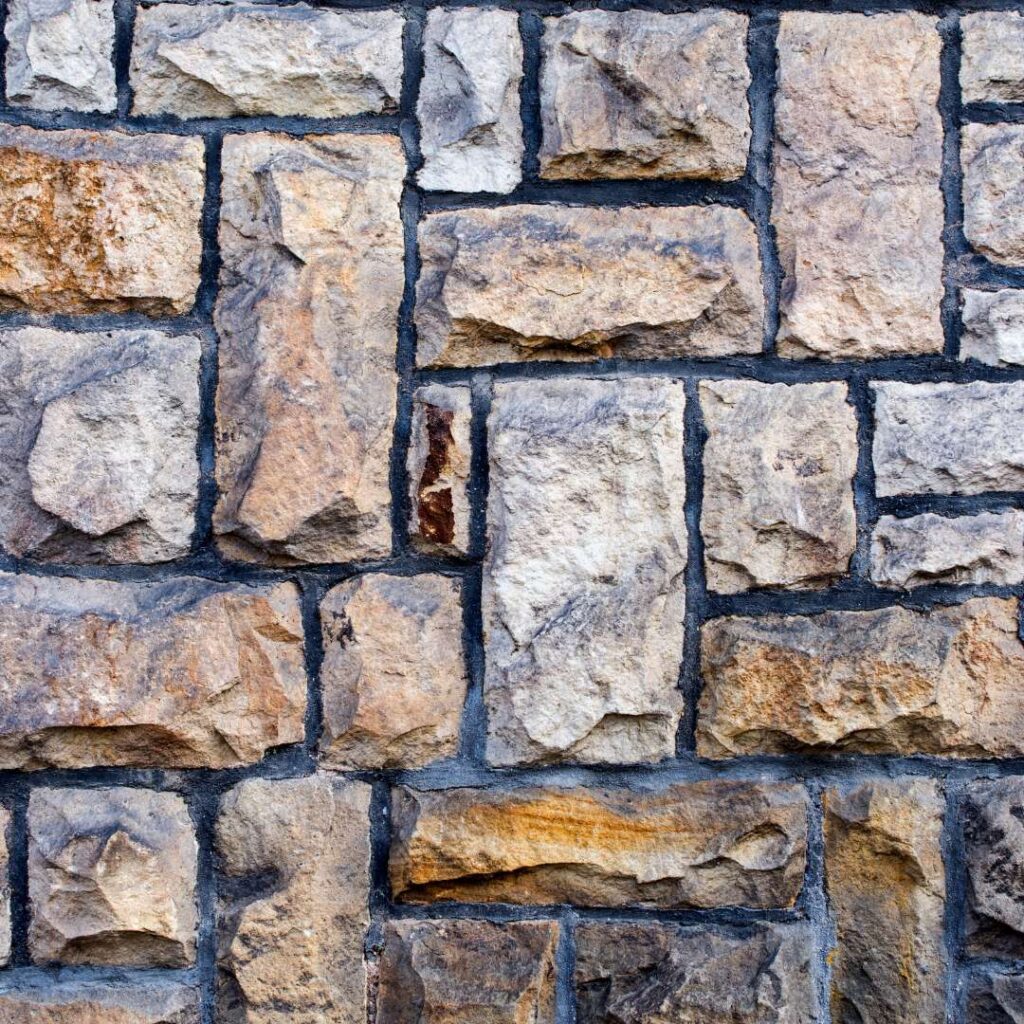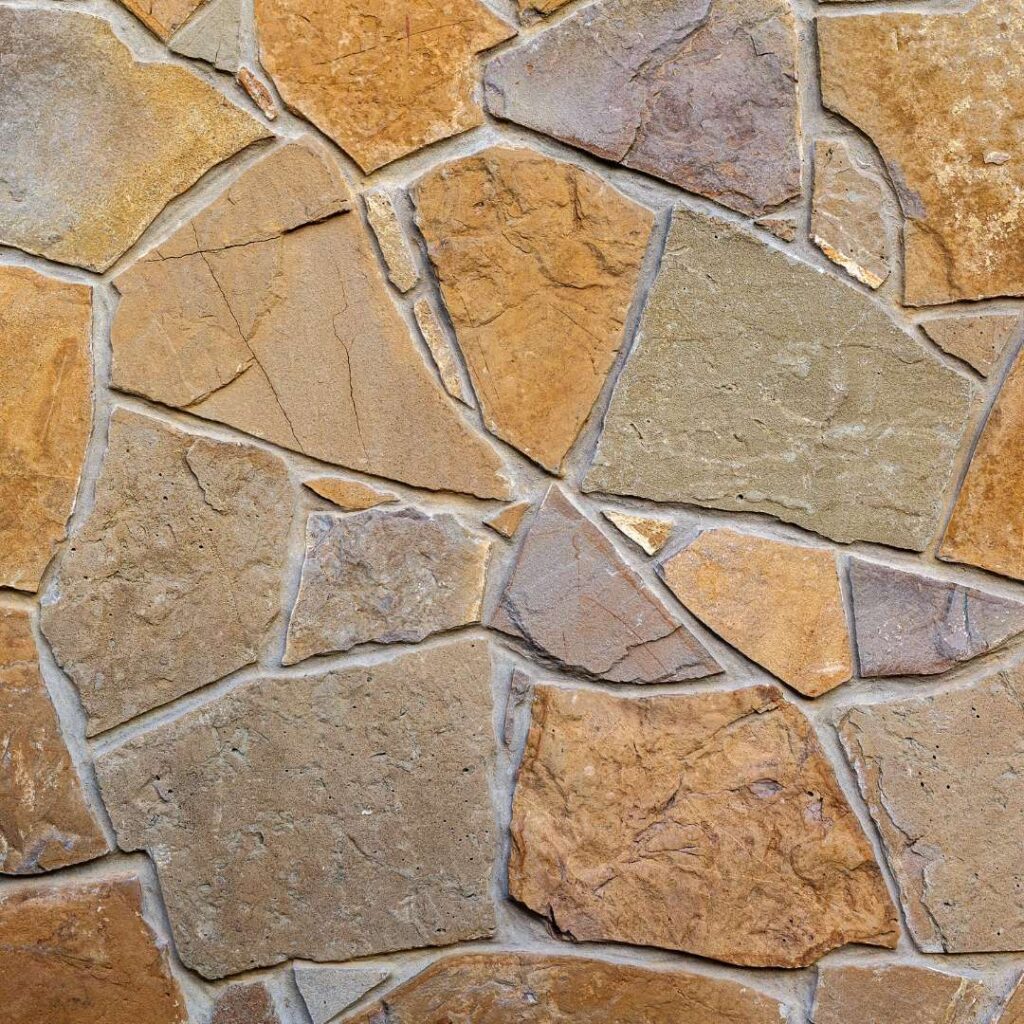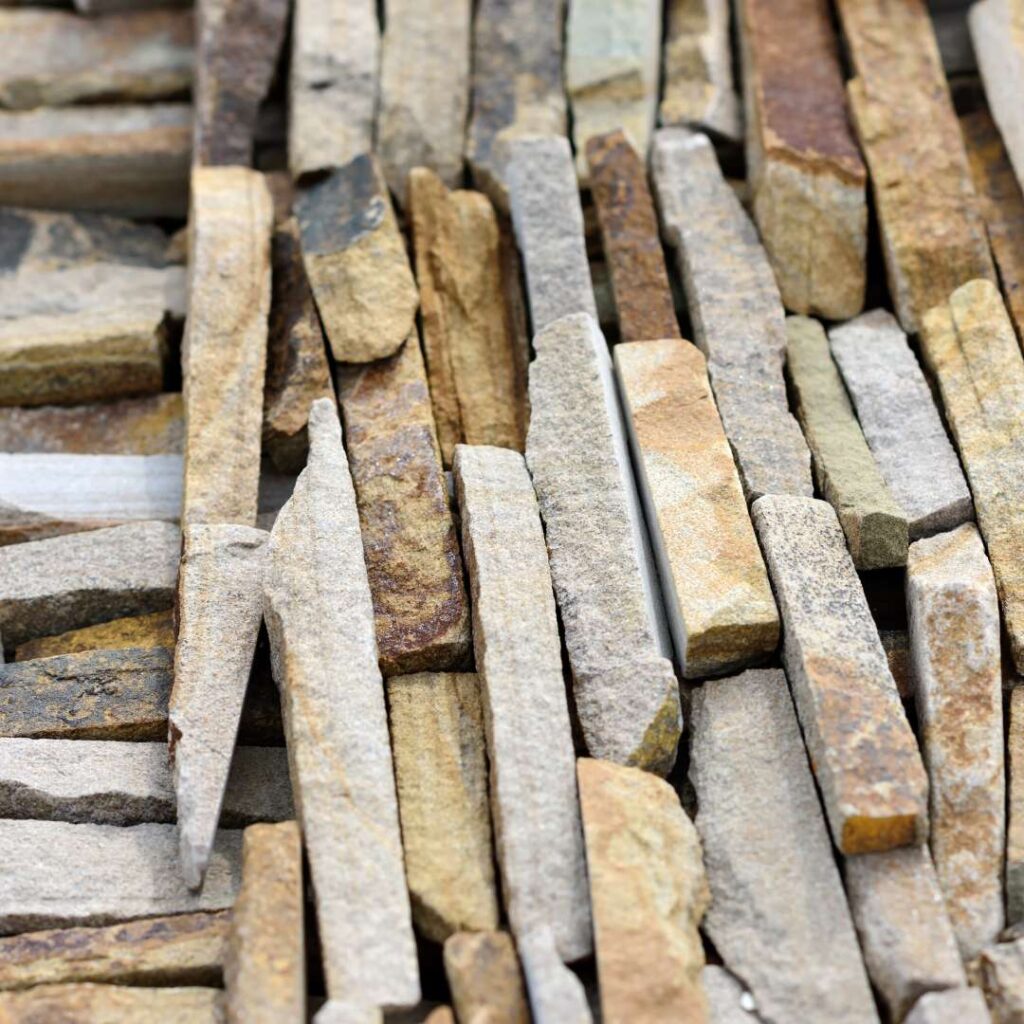What Is Stone Cladding

Is not it amazing when you look at a beautiful wall of stones lining the interior or exterior of your home? Imagine having a lovely stone wall separating different parts of a garden in the backyard or having a stone wall to add a sense of nature and stillness to your sauna.
This particular style of decoration is called stone cladding and it is an instant eye-catch for guests whenever they come over. Stone cladding has so many minute details that are both mesmerizing to see and well as playing a functional role in a home or office setting.
But how is this feature accomplished? As a kid, I always wondered if the entire wall was made of stone and how long it would take to stack all those stones so carefully. Well, that childish creativity is not completely incorrect as there are a few ways for stone cladding to be performed. Which is why we are going to give you a complete summary of stone cladding, involving what it is, how it is done, what uses it has and the best materials for wall design.
What Is Stone Cladding
Stone cladding is the method of using natural or artificial stones to cover an interior or exterior of a structure. These stones are most commonly placed in calls for decoration or insulation. Artificial stones are also known as veneers.

Types of Stone Cladding
When discussing stone cladding, there are typically three main types of how the stones are placed.
Traditional Handset
Traditional handset cladding is when stones are fixed into a pre-rendered template which form a backing structure. This structure evenly distributes the weight to rest comfortably on floor plates.
Rainscreen
Rainscreen cladding is when the stones are installed using a concealed system or clip system where the back has extra ventilation. This additional space forms a drainage cavity to remove excess moisture.
Custom
Custom cladding is as the name suggests, being more customized to the installers wishes as long as it is okay with the manufacturer and permissible with construction codes. These designs can be more intricate like mosaic tiles or anything the owner would like. Custom cladding walls are typically found in boutique shops.
Stone Cladding Appeal
One of the primary reasons someone would install stone cladding is because of how amazing it looks. The symmetry of the stones and panels is delightful as a simple design or stones arranged in a nice layer can accent a lovely garden or water feature.
Exterior
Stone cladding can be used for both residential and commercial construction projects. Installing stone cladding on the outside of a building increases the “curb appeal,” meaning it increases the chance of people noticing your home or office. It is also more recognizable for guests to find when many buildings can look the same without a proper view of the building number.
Interior
Stone cladding on the inside of a residence or commercial building is equally as appealing as it creates a warm and friendly atmosphere for you and your guests to enjoy.
Fireplace
When you imagine a fireplace, one of the go-to images people will think of is a brick stone fireplace with a roaring fire producing smoke from a tall chimney. Those bricks can either be placed directly by hand, but many modern fireplaces have brick stone cladding.
Wall Feature
Commercial businesses love to have an eye-catching feature in their lobby to wow their guests and clients the moment they enter the building. Water features like fountains or waterfalls look even nicer when they have stone cladding to make it feel like a part of nature instead of an artificial water show.
Landscaping
Stone cladding is often used as retaining walls or dividers for gardens to keep the aesthetic of working in nature.

Advantages of Stone Cladding
Aside from the visual appeal, stone cladding has a number of practical uses which owners may not be aware of after installation.
· Looks Good: We will keep saying it, but stone cladding looks amazing.
· Durability: Depending on the stone being used, it can be very durable against weather, damage, staining, and chipping.
· Insulation: Stone cladding provides extra insulation to keep heat inside while keeping the outdoor weather out.
· Saves Money: With extra insulation, this can save homeowners and building owners money by needing less power to keep the building warm in the winter or cool in the summer.
· Low maintenance: Depending on where the stones are located and what they are being used for, stone cladding can be quite easy to maintain with minimal effort to keep them clean.
· Property Value: Stone cladding is a great way to increase the property value of a structure because it has curb appeal and interior style.
Disadvantages of Stone Cladding
As with all things, there are some disadvantages to stone cladding that people should consider before buying to make sure the appeal is with it.
· Expensive: Stone cladding can be very expensive to install since it is a laborious endeavor to transport, layer, and display properly.
· Weight: Veneers are still made of stone, which are very heavy objects. Certain stones are heavier than others where they must be evenly placed so the weight does not lean in any direction, otherwise it could damage the back frame, tilt, shift, or waver. Certain building codes must be met for custom stone cladding.
· Limited Flexibility: Once installed, veneers are hard to modify, change, or fix without damaging the surrounding sections.
· Trapped Moisture: If poorly installed, the veneers can trap moisture leading to water damage, stains, mineral deposit build-up, or mold growing in the walls.
· Professional Installation Only: Installing veneers is not a DIY project. Only a professional should install stone cladding as they are trained to do so. A homeowner trying to do it themselves can be quickly hurt or make a mistake in the setting process where the stone could fall.
· Sealing: Stone cladding should be sealed to ensure it stays healthy and protected for a long time. It can be expensive and tiring sealing exterior stones if one resides near the ocean as the harsh weather will lead to constant maintenance.

Material for Stone Cladding
Veneers can come with several selections of stone. Each stone has its own durability, cleaning and maintenance requirements which must be met if they are to remain healthy.
Granite
Granite is a rock which has been formed when quartz, feldspar and mica minerals are melted down by hot magma and recrystallize together. Granite stones are exceptionally strong, easy to clean, and resistant to most forms of damage that they are widely considered some of the best stones to use for interior and exterior design.
Marble
Marble is a metamorphic rock that is formed when limestone is exposed to high temperatures and pressure for thousands of years. The limestone recrystallizes to form a denser rock with calcite crystals. Marble has a long history of being used for interior design and famous monuments, so it is a perfect choice for stone cladding. Renowned for its beauty and elegance, marble is softer than other stones and requires more work to maintain to keep healthy.
Quartzite
Quartzite is another metamorphic rock where quartz and sandstone are exposed to extreme temperatures and compressed under intense pressure for thousands of years. The quartz grains and sandstone fuses together to form the much harder quartzite stone. Quartzite comes in a plethora of unique colors and has excellent resistance to staining, chipping, and heat.
Artificial Stone
Artificial stones can be any number of stones which are manufactured instead of quarried from the Earth. Each stone can have different properties to it, depending on the stone being created. For instance, quartz stones are developed to be sturdier than marble and quartzite where it can rival granite in hardness and durability. Other examples of artificial stones are concrete, terrazzo and artificial brick.
Just because these stones are artificial, does not mean they are fake. They are still extremely sturdy and look amazing.
Sandstone
Sandstone is formed when grains of sand are fused together over thousands of years. Sandstone is very porous by nature, but still very capable and sturdy. It is better used indoors away from areas with high humidity or water to prevent water stains from forming, but it can be used outdoors if it is regularly cleaned.
Limestone
Limestone is the combination of shells, coral, algal and other organic debris over thousands of years. Due to the softer materials composing of limestone, it is much softer than other stones and needs constant maintenance. Limestone is good for interior stone cladding in spaces designed for wall decoration away from water, food, or other materials which can cause staining.
Basalt
Basalt is a volcanic rock rich in magnesium and iron, which has been rapidly cooled by being near the surface of the Earth. Basalt is one of the most common rocks in the Earth’s crust and can even be found on other planets like Mars and the Moon. It has exceptional durability and resistance, but it does have small pores left from gas bubbles escaping from steam being released from magma while it was being formed. A sealer and regular cleaning are sufficient to keep this stone clean and reliable for your wall designs.
Slate
Slate the culmination of mudstone and other minerals continually being layered upon one another. How magma fuses the layers together into a single stone and then compressed by intense pressure into a single sheet. This method gives slate its iconic flat and layered look. Depending on the quality of slate, it can range in durability and porosity. Overall, slate has excellent durability and resistances to heat, but can be delicate to chipping if not careful. Slate sheets are already used for home insulation, making them a top choice for stone cladding.
Conclusion
Stone cladding is an outstanding way to decorate your home or office by adding natural charm and design to the interior or exterior of your building. The options are limitless on how you would want to decorate and design your wall cladding as there are a plethora of stones to use, as well as colors and combinations to consider. Stone veneers provide aesthetic and practical appeal to make your buildings look good and keep them insulated from the elements.
The only choice left to decide is when do you want to get started on installation?
